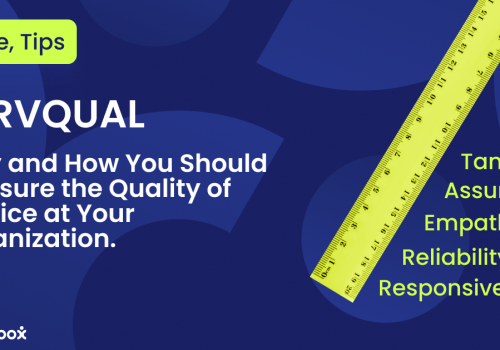Company Internal Communications Strategy. Internal communications is a critical part of any business, and it’s often given too little attention. Most companies understand the importance of external communications. They will meticulously plan how to communicate with clients and stakeholders. They will set out rules and recommendations for how to talk with the ‘company voice’. They will develop a strategy for when they will post on social media, who can contact the press, how many blog posts or video content should be launched every month, and so on. Nothing is left up to chance.
However, the picture is much murkier with internal communications. Often, little thought is given to it at all. Sure, managers or other senior employees will send emails around to inform staff of business-related updates or events. They might put up the odd poster on a noticeboard when there’s a staff party. But often, they don’t develop a full-on strategy. Why? Because the consequences of not having an external communications strategy are crystal clear. A company with little control over external communications can find themselves in a situation where:
- Employees unknowingly say the wrong thing to clients or stakeholders, spreading misleading or harmful information.
- They have an inconsistent company voice, and customers don’t know what to expect.
- They post to social media infrequently or erratically and fail to increase brand awareness.
- They engage with the press ineffectively. This can either mean choosing the wrong interviews and publications or failing to respond quickly enough to comment on important events that could strengthen their authority in the industry.
However, the consequences of a poor internal communications strategy are less clear. But is it always about the effects of not doing something? There’s no consequence to not eating ice cream, but most people would agree that there are benefits to it – it makes people happy. An internal communications strategy can significantly benefit your employees, and in the next section, we’ll look at why.
It’s time for you to take a closer look at internal communications.
Why You Need an Internal Communications Strategy
An internal communications strategy is essentially a blueprint for achieving communications success within the company. A good plan will result in happier, more motivated, engaged, and productive employees. By contrast, a poor strategy, or no plan, can result in low morale and poor productivity.
Here are some insights you should know:
74% of employees think they are missing out on company news and information.
A crucial part of boosting company morale is employees believing that they are a critical element of your success. Employees have to feel like the work they do adds value to the business. When they miss out on company news and information, they feel more removed from the business.
72% of employees don’t have a full understanding of the company’s strategy.
If employees don’t understand how they fit into the company’s goals, they won’t feel motivated to work harder or put the extra effort into making their work of high quality.
85% of employees say they feel most motivated when management provides regular updates.
Again, regular updates help employees visualize their role in the success of the company. It’s cause and effect. They know the work they’ve done, and they can see the fruits of their labor. Without regular updates, they can begin to feel detached from their work and only put in the bare minimum.
Disengaged employees cost companies over $450 billion a year. This loss comes from a range of factors, including loss of profit, wage dollars, loss of sales, and more.
Disengaged, unmotivated, low-energy employees don’t work as hard as their engaged counterparts, and this is a well-documented fact. Many companies are still focusing on negative reinforcement to squeeze more productivity or higher performance from their employees. They set extreme targets and punish employees for not meeting them. They micromanage employees to the point where those employees feel mistrusted or continuously stressed. You’ll never get the most out of someone if they’re in a state of worry and stress. People do their best work when they feel valued, happy, and engaged.
54% of employees say a strong sense of community kept them at a company longer than they initially intended.
Things like happy coworkers, celebrating milestones, being united in a joint mission are all things that improve the sense of community. Employees feel connected to the business beyond their paycheck.

How to Structure Your Internal Communications Strategy
A communications strategy is usually presented as a table or document that covers the following areas:
- Key stakeholders: This is where you list partners who should get informed on selected internal topics. This could be team leaders, managers, or senior ranking staff. It could also be subject matter experts (SMEs) or project managers.
- Key communication activities: For example, blogs, messages, videos, newsletters, wall posters, pictures, leaflets, and so on.
- Communication team resources: This is where you detail what resources you need to meet your goals. It would be best if you detailed every team member and their expertise. You can also name external resources you can draw from, like if you work with a 3rd party who designs surveys or graphic design content for you.
- Communication goals: What value do internal communications bring to the business? What role do they play in the corporate strategy overall?
- Employee relationships: Detail relationships and the level of expected activity. For example, if you have an office in the countryside, they don’t need to receive frequent communications that only apply to the main office like lunchtime events they can’t take part in.
- Employee segments: Who are your employees? You can segment employees by team, department, certificates, seniority, engagement level, and so on. The segments you pick are up to you.
- Communication channels: After deciding on your employee segments, you need to determine how you will communicate with each one. For example, the sales team might prefer to use the company intranet to see updates rather than receiving them via email because they want to keep their inbox clear for incoming sales queries.
The Internal Communications Tools You Should be Using
Newsletters
Newsletters are a great way of presenting information in an easy to read format. They help employees catch up on anything they’ve missed throughout the week or month. Here are some benefits to newsletters:
- They help bring every communication channel together. If an employee misses an update on one channel, they’ll still see it in the newsletter.
- Employees know they can rely on the newsletter. This takes the pressure off having to check their emails and other channels to ensure they haven’t missed anything.
- It reminds employees of all the great work the business is doing and allows them to share in the success.
- It’s a great way to communicate change in the workplace to employees.
Smart Inboxes
This goes for both the internal communications team and the wider business. One problem with internal communications that we haven’t touched on so far is this: employees have to want to read the updates. If they believe they are being spammed because internal comms emails flood their inbox and distract them from work, they might stop opening the emails. With smart inboxes, information is organized logically, and employees can always access the most information they need when they need it. Additionally, with the high volume of emails that come in every day, employees can miss crucial updates without a smart inbox because they get lost in the sea of emails.
Employee Feedback Tools
Internal communications are something that needs to be continuously monitored and improved. How do you improve? By finding where you’re failing and making changes to address it. With the right questions, employee feedback apps can help you understand how engaged and motivated your employees are and how much information is getting through. You can do this through surveys or polls or let employees know what channels they should use to discuss something in more detail.
Videos
Videos continue to be a powerful form of content marketing in external communications, but the same is true internally. Videos typically have higher engagement rates than written text because it’s a more passive activity. If you’re not already using videos in your internal communications strategy, you should be. The key is to use videos in the right places. Here are some great places to start:
- How-to videos for common employee questions or issues. For example, how-to use the printer, how-to collect your employee rewards, and so on.
- A “day in the life” video of teams or functions in the business. This helps employees see what work is like in other teams and how they add value to the company.
- Onboarding videos for new employees.
- Create videos or demonstrations of new products and services.
Video Conferencing
It’s predicted that after the pandemic, many employees will continue to work remotely since the benefits of this model have been realized. Video conferencing is a great way to ensure remote teams stay connected and can collaborate with the wider business.
Intranet
The intranet functions as your internal website, and you can do some powerful things with the right intranet. You can design it much like your customer-facing website, with blog posts, activity feeds, team pages, discussion forums, and so on.

Best Practices For Designing Your Internal Communications Strategy
Assess Where You Are Today
Before you can design an excellent internal communications strategy, you need to determine the health of communications right now. How engaged are your employees? Do they feel they see enough company news? Do they feel close to the success of the business? If you already have a strategy, you should try to determine how that strategy has performed so far. Are there areas of weakness? For example, channels you are underutilizing.
How Will You Track Your Success?
To know how effective your internal communications strategy is, you have to track key metrics. If you have an internal social network, you can track things like how many times a post is shared. This can help you determine whether some content is more engaging than others. For videos, you should be able to track how many views they get and, depending on the software, whether users typically watch the entire video or not.
Then there are employee metrics. For example, is your content sparking discussions on company forums? Are employees reporting higher morale levels in surveys?
Set Realistic Goals
We get it; you want an excellent strategy and great results now. But internal communications don’t work like that. It’s primarily a tool to boost morale and company knowledge, and that doesn’t happen overnight. If you want to see results quickly, you should focus on the areas where you can make the most impact in the shortest time. For example, if you find that currently, 40% of your communications are being blurred by too much other information (like emails, etc.), then you can switch to a smart inbox.




















